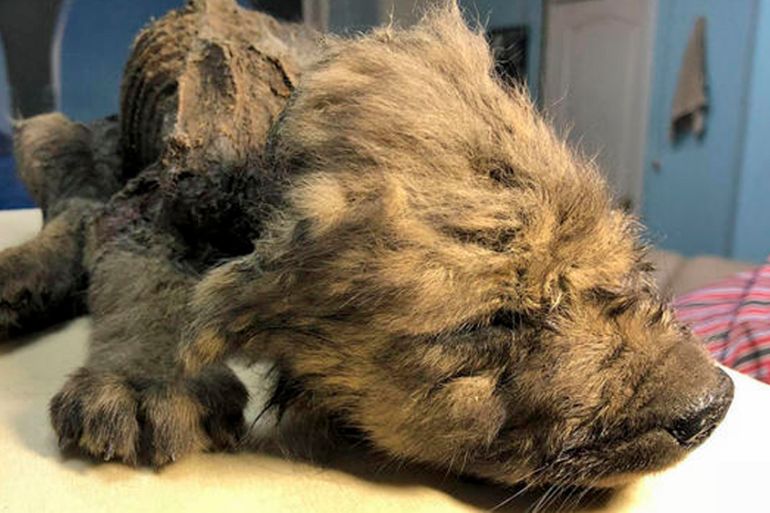Russian scientists display 18,000-year-old permafrost pup
Amid climate change, Russia’s far east has provided many riches for researchers studying remains of ancient animals.

Russian scientists showed off a prehistoric puppy believed to be 18,000 years old that was found in permafrost in the country’s far east.
Discovered last year in a lump of frozen mud near the city of Yakutsk, the puppy is unusually well-preserved with its hair, teeth, whiskers and eyelashes still intact.
“This puppy has all its limbs, pelage – fur, even whiskers. The nose is visible. There are teeth. We can determine due to some data that it is a male,” Nikolai Androsov, director of the Northern World private museum where the remains are stored, said at the presentation at the Yakutsk’s Mammoth Museum, which specialises in ancient specimens.
In recent years, Russia’s far east has provided many riches for scientists studying the remains of ancient animals. As the permafrost melts, affected by climate change, more and more parts of woolly mammoths, canines and other prehistoric animals are being discovered. Often it is mammoth tusk hunters who discover them.
“Why has Yakutia come through a real spate of such unique findings over the last decade? First, it’s global warming. It really exists, we feel it, and local people feel it strongly. Winter comes later, spring comes earlier,” Sergei Fyodorov, a scientist with the North-Eastern Federal University, told The Associated Press.
“And the second very serious deep reason of why there a lot of finds is the very high price of mammoth tusk in the Chinese market.”
When the puppy was discovered, scientists from the Stockholm-based Center for Palaeogenetics took a piece of bone to study its DNA.
“The first step was, of course, to send the sample to radiocarbon dating to see how old it was and when we got the results back it turned out that it was roughly 18,000 years old,” Love Dalen, professor of evolutionary genetics at the centre, said in an online interview.
Further tests, however, left the scientists with more questions than answers – they could not definitively tell whether it was a dog or a wolf.
“We have now generated a nearly complete genome sequence from it and normally when you have a two-fold coverage genome, which is what we have, you should be able to relatively easily say whether it’s a dog or a wolf, but we still can’t say and that makes it even more interesting,” Dalen said.
He added that scientists are about to do a third round of genome sequencing, which might solve the mystery.